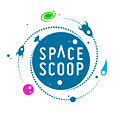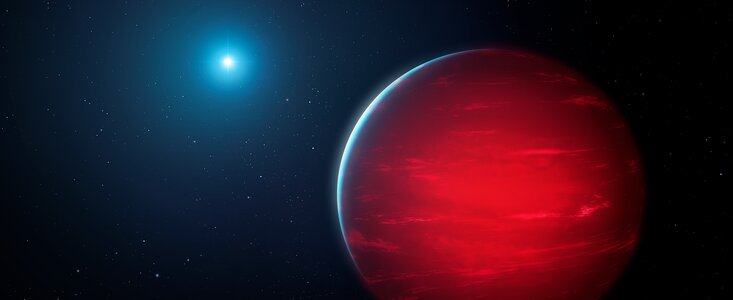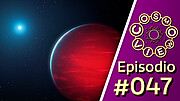Citizen Scientist Leads Discovery of 34 Ultracool Dwarf Binaries Using Archive at NSF’s NOIRLab
Amateur astronomer delves into archival data at the Community Science and Data Center to discover 34 ultracool dwarfs accompanying low-mass stars or white dwarfs
7 July 2022
How often do stars live alone? For brown dwarfs — objects that straddle the boundary between the most massive planets and the smallest stars — astronomers need to uncover more examples of their companions to find out. Ace citizen scientist Frank Kiwy has done just that by using the Astro Data Lab science platform at NSF’s NOIRLab to discover 34 new ultracool dwarf binary systems in the Sun's neighborhood, nearly doubling the number of such systems known.
A citizen scientist has searched NSF's NOIRLab’s catalog of 4 billion celestial objects, known as NOIRLab Source Catalog DR2, to reveal brown dwarfs with companions. His intensive investigation led to the discovery of 34 ultracool dwarf binary systems, nearly doubling previously known samples [1].
Brown dwarfs lie somewhere between the most massive planets and the smallest stars. Lacking the mass needed to sustain nuclear reactions in their core, brown dwarfs loosely resemble cooling embers on a huge scale. Their faintness and relatively small sizes make them difficult to identify. Data from sensitive telescopes have enabled the discovery of several thousand objects but just a small subset have been identified as binaries. The difficulty in observing these faint embers also means that astronomers are still unsure how often brown dwarfs have companions.
To help find brown dwarfs, the astronomers of the Backyard Worlds: Planet 9 citizen science project have previously turned to a worldwide network of more than 100,000 volunteer citizen scientists who scrutinized telescope images to identify the subtle motion of brown dwarfs against background stars. Despite the abilities of machine learning and supercomputers, the human eye is still a unique resource when it comes to scouring telescope images for moving objects.
“The Backyard Worlds project has fostered a diverse community of talented volunteers,” commented Aaron Meisner, an astronomer at NSF’s NOIRLab and co-founder of Backyard Worlds. “150,000 volunteers across the globe have participated in Backyard Worlds, among which a few hundred ‘super users’ perform ambitious self-directed research projects.”
One such ‘super sleuth — citizen scientist Frank Kiwy — embarked on a research project involving the NOIRLab Source Catalog DR2, a catalog of nearly 4 billion unique celestial objects that contains all of the public imaging data in NOIRLab's Astro Data Archive. By searching the data for objects with the color of brown dwarfs, Kiwy was able to find more than 2500 potential ultracool dwarfs lurking in the archive. These were then scrutinized for hints of comoving companions, yielding a total of 34 systems comprising a white dwarf or low-mass star with an ultracool dwarf companion [2]. Kiwy then led a team of professional astrophysicists in publishing these discoveries in a scientific paper.
“I love the Backyard Worlds: Planet 9 project! Once you master the regular workflow you can dive much deeper into the subject,” commented Kiwy. “If you're a person who is curious and not afraid to learn something new, this might be the right thing for you.”
“This amazing result clearly demonstrates that NOIRLab’s data archive has a reach far beyond that of professional astronomers,” notes Chris Davis, NSF’s Program Director for NOIRLab. “Keen members of the public can also participate in cutting-edge research and directly share in the joy of cosmic discovery!”
As well as being an inspiring story of citizen science, these discoveries could help astronomers determine if brown dwarfs are more akin to oversized planets or undersized stars, as well as providing insights into how star systems evolve over time. It also demonstrates the continued exceptional contribution to astronomy made by scientists using astronomical archives and science platforms such as NOIRLab’s Astro Data Archive and Astro Data Lab at the Community Science and Data Center (CSDC).
“These discoveries were made by an amateur astronomer who conquered astronomical big data,” concluded Aaron Meisner. “Modern astronomy archives contain an immense treasure trove of data and often harbor major discoveries just waiting to be noticed.”
Notes
[1] Previous samples include white dwarf plus ultracool dwarf (L dwarf) pairs separated by more than 150 astronomical units (au), and red dwarf plus L dwarf pairs with separations between 700 and 1800 au. An astronomical unit (au) is a unit used by astronomers that was originally chosen to represent the average distance between the Earth and the Sun: roughly 150 million kilometers or 93 million miles.
[2] The closest-together pair of dwarfs had a physical separation of only ~170 au, and the furthest apart were about 8500 au from one another.
More information
This research was presented in the paper “Discovery of 34 low-mass comoving systems using NOIRLab Source Catalog DR2” to appear in The Astronomical Journal.
The team is composed of Frank Kiwy (Backyard Worlds: Planet 9), Jacqueline K. Faherty (Department of Astrophysics, American Museum of Natural History), Aaron Meisner (NSF’s NOIRLab), Adam C. Schneider, (United States Naval Observatory and Department of Physics and Astronomy, George Mason University), J. Davy Kirkpatrick (IPAC, Caltech), Marc J. Kuchner (NASA Goddard Space Flight Center, Exoplanets and Stellar Astrophysics Laboratory), Adam J. Burgasser (Center for Astrophysics and Space Science, University of California San Diego), Sarah Casewell (School of Physics and Astronomy, University of Leicester), Rocio Kiman (Kavli Institute for Theoretical Physics, University of California Santa Barbara), Emily Calamari (Department of Physics, Barnard College, Columbia University), Christian Aganze (Department of Physics, University of California San Diego), Chih-Chun Hsu (Department of Physics, University of California San Diego), Arttu Sainio (Backyard Worlds: Planet 9), Vinod Thakur (Backyard Worlds: Planet 9), and The Backyard Worlds: Planet 9 Collaboration.
NSF’s NOIRLab(National Optical-Infrared Astronomy Research Laboratory), the US center for ground-based optical-infrared astronomy, operates the International Gemini Observatory(a facility of NSF, NRC–Canada, ANID–Chile, MCTIC–Brazil, MINCyT–Argentina, and KASI–Republic of Korea), Kitt Peak National Observatory (KPNO), Cerro Tololo Inter-American Observatory (CTIO), the Community Science and Data Center (CSDC), and Vera C. Rubin Observatory(operated in cooperation with the Department of Energy’s SLACNational Accelerator Laboratory). It is managed by the Association of Universities for Research in Astronomy (AURA) under a cooperative agreement with NSF and is headquartered in Tucson, Arizona. The astronomical community is honored to have the opportunity to conduct astronomical research on Iolkam Du’ag (Kitt Peak) in Arizona, on Maunakea in Hawai‘i, and on Cerro Tololo and Cerro Pachón in Chile. We recognize and acknowledge the very significant cultural role and reverence that these sites have to the Tohono O'odham Nation, to the Native Hawaiian community, and to the local communities in Chile, respectively.
Contacts
Aaron Meisner
Astronomer
NSF’s NOIRLab
Cell: +1 650 714 8643
Email: aaron.meisner@noirlab.edu
Amanda Kocz
Communications Manager
NSF’s NOIRLab
Tel: +1 520 318 8591
Email: amanda.kocz@noirlab.edu





